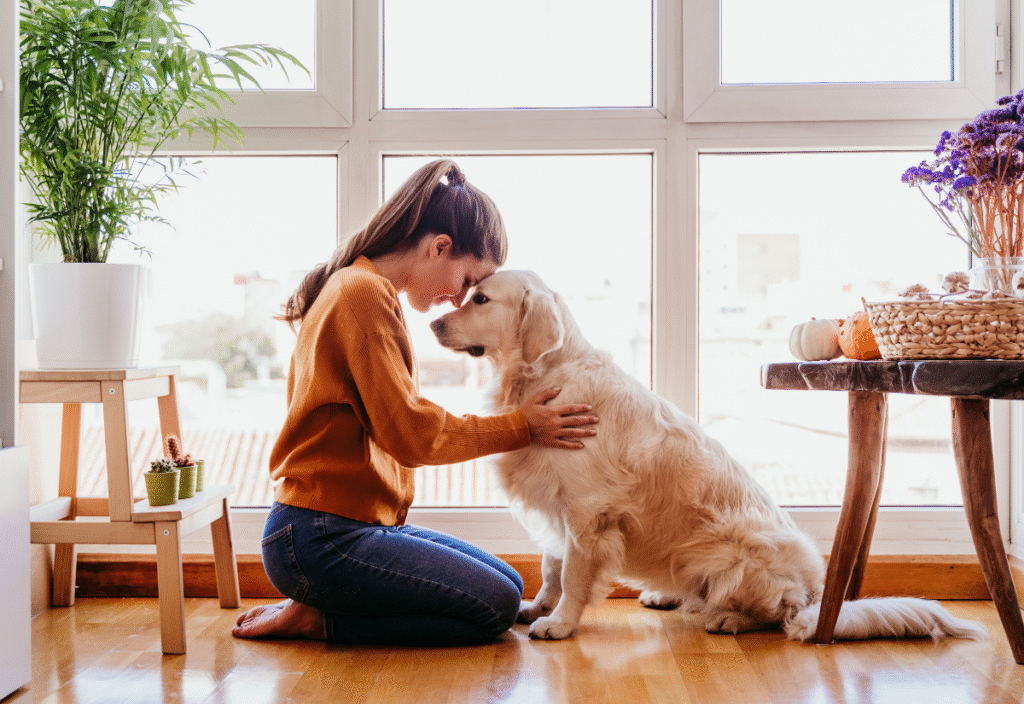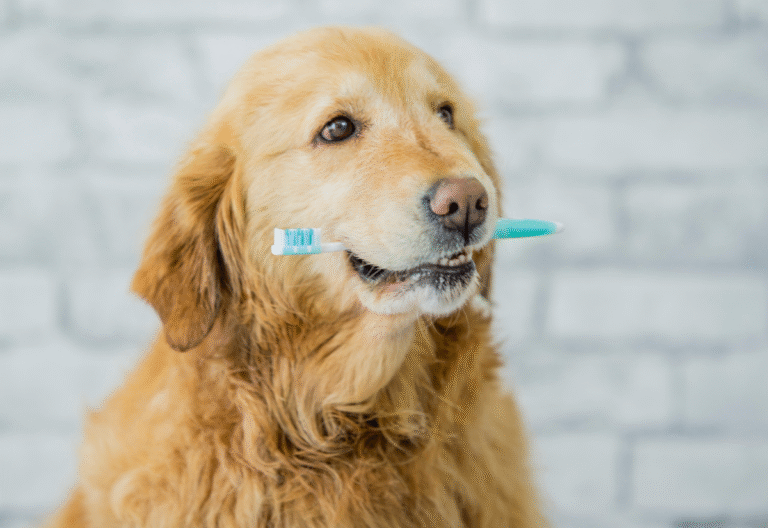Recognizing the Early Signs of Canine Cognitive Dysfunction (Dog Dementia)
Watching your beloved companion age can be both precious and concerning. While it’s normal for senior dogs to slow down physically, certain behavioral and mental shifts may indicate something more significant. Recognizing the early signs of canine cognitive dysfunction (dog dementia) is crucial for ensuring your aging dog receives the care and support they need to maintain the best possible quality of life during their golden years.

What Is Canine Cognitive Dysfunction?
Canine cognitive dysfunction (CCD), often compared to Alzheimer’s disease in humans, is a progressive neurological disorder that affects a dog’s memory, awareness, learning abilities, and overall mental sharpness. This condition primarily affects senior dogs, typically appearing around age 10 or older, though some large breed dogs may show signs earlier due to their shorter lifespans.
Studies suggest that approximately 14% of dogs aged 8 and older show signs of cognitive decline, with that number increasing to over 40% in dogs 14 years and older. While CCD isn’t curable, early recognition and proactive management can significantly improve your dog’s quality of life and slow the progression of symptoms.
Early Behavioral Changes to Watch For
Recognizing early signs of canine cognitive dysfunction (dog dementia) can be challenging because many symptoms initially resemble normal aging. However, watching for subtle yet consistent changes can help you identify potential problems early. Key warning signs include:
Disorientation and Confusion
- Getting lost in familiar places like your home or yard
- Staring blankly at walls, floors, or into space
- Difficulty navigating around furniture or through doorways
- Forgetting the location of doors or getting stuck in corners
Altered Sleep-Wake Patterns
- Restlessness and pacing at night
- Increased daytime sleeping
- Reversed day-night cycle (awake all night, sleeping all day)
- Difficulty settling down for sleep
House-Training Regression
- Indoor accidents despite being fully house-trained
- Forgetting to signal when they need to go outside
- Not recognizing appropriate elimination areas
- Loss of bowel or bladder control
Changes in Social Interaction
- Decreased interest in greeting family members
- Less enthusiasm for petting or attention
- Withdrawal from other pets
- Failing to recognize familiar people or animals
- Reduced response to their name
Activity Level Fluctuations
- Decreased interest in play, walks, or favorite activities
- Aimless wandering or repetitive pacing
- Standing still and appearing “frozen”
- Sudden anxiety or agitation without obvious triggers
Increased or Unusual Vocalization
- Excessive barking, whining, or howling
- Vocalizing at night or unusual times
- Crying or whining without apparent reason
- Changes in the tone or pattern of barking
The DISHA-A Acronym: A Helpful Diagnostic Tool
Veterinarians and pet behaviorists often use the DISHA-A acronym to systematically identify the main symptoms of canine cognitive dysfunction:
- Disorientation in familiar environments
- Interaction changes with people or pets
- Sleep-wake cycle disturbances
- House-soiling or loss of house-training
- Activity changes (increased or decreased)
- Anxiety or increased irritability
If your senior dog exhibits multiple DISHA-A symptoms that persist for several weeks, it’s essential to schedule a comprehensive veterinary evaluation as soon as possible. Keep a journal of specific behaviors, including when they occur and their frequency, to help your veterinarian make an accurate assessment.
How Veterinarians Diagnose Dog Dementia

Diagnosing CCD involves a thorough process of elimination, as many other health conditions can produce similar symptoms. Your veterinarian will work to rule out:
- Vision or hearing loss
- Arthritis or mobility issues causing behavioral changes
- Thyroid disorders (hypothyroidism)
- Kidney or liver disease
- Brain tumors
- Diabetes
- Urinary tract infections
The diagnostic process may include:
- Complete physical examination
- Blood work and urinalysis
- Neurological assessment
- Blood pressure monitoring
- Behavioral history and questionnaires
- In some cases, advanced imaging (MRI or CT scans)
There’s no single definitive test for CCD, so diagnosis is typically made based on the pattern of symptoms combined with ruling out other medical causes.
Managing Canine Cognitive Dysfunction: A Multi-Faceted Approach
While there’s no cure for CCD, several evidence-based strategies can help slow progression and significantly improve your dog’s daily comfort and mental function:
Dietary Support and Supplements
Nutrition plays a vital role in supporting brain health:
Senior Brain-Health Diets
- Look for foods specifically formulated for cognitive support
- Choose diets rich in antioxidants (vitamins E and C)
- Select foods with medium-chain triglycerides (MCTs) for brain energy
- Ensure adequate omega-3 fatty acids (DHA and EPA)
Beneficial Supplements
- Fish oil supplements for omega-3 fatty acids
- Antioxidant blends containing vitamins C and E
- SAMe (S-adenosylmethionine) for liver and brain function
- Phosphatidylserine for cellular brain health
- Melatonin for sleep-wake cycle regulation
- CBD oil (consult your vet about appropriate dosage)
Always consult your veterinarian before starting any supplements to ensure proper dosing and avoid interactions with existing medications.
Mental Enrichment Activities
Keeping your senior dog’s mind active is crucial:
- Introduce age-appropriate puzzle feeders and interactive toys
- Practice gentle, simple training exercises or review old commands
- Offer new scents and textures to explore safely
- Provide short, supervised outdoor adventures in secure areas
- Rotate toys to maintain novelty and interest
- Consider scent work games with hidden treats
Consistent Routines and Structure
Dogs with CCD benefit greatly from predictability:
- Maintain regular feeding times in the same location
- Keep consistent walk schedules (even if shorter)
- Establish bedtime routines with calming activities
- Minimize household changes and furniture rearrangement
- Use the same routes for walks and bathroom breaks
- Keep essential items (food, water, bed) in familiar locations
Veterinary Treatments and Medications
Several FDA-approved and off-label medications may help:
Selegiline (Anipryl®)
- The only FDA-approved medication for CCD in dogs
- Works by increasing dopamine levels in the brain
- May improve alertness, activity, and responsiveness
- Requires several weeks to show effects
Additional Medication Options
- Anti-anxiety medications for agitation and restlessness
- Sleep aids for nighttime restlessness
- Pain medications if arthritis contributes to symptoms
Your veterinarian will determine the most appropriate treatment plan based on your dog’s specific symptoms and overall health status.
Environmental Modifications
Creating a dementia-friendly home environment:
Safety Improvements
- Install non-slip mats or rugs on slippery floors
- Use baby gates to block stairs or dangerous areas
- Remove obstacles and clutter from main pathways
- Add ramps if your dog has difficulty with stairs
Navigation Aids
- Place night lights throughout the house for nighttime wandering
- Use motion-sensor lights in key areas
- Mark doorways with contrasting colors
- Keep interior doors open to prevent confusion
Comfort Enhancements
- Position water bowls in multiple, easy-to-find locations
- Use elevated feeders if helpful for your dog
- Provide orthopedic bedding for joint support
- Create a quiet, comfortable sleeping area away from household comets
- Consider pheromone diffusers to promote calmness
Products That Can Help
Cognitive Support Products

- Senior-specific brain health dog food formulas
- Omega-3 fish oil supplements
- Antioxidant supplement blends
- Calming pheromone diffusers or collars
Interactive and Enrichment Items

- Slow-feeder bowls and puzzle toys for seniors
- Snuffle mats for scent enrichment
- Soft, age-appropriate chew toys
- Treat-dispensing toys with easy difficulty levels
Comfort and Safety Equipment

- Orthopedic memory foam dog beds
- Non-slip floor mats and runners
- LED night lights or motion-sensor lights
- Baby monitors for overnight observation
- Waterproof bed pads for accidents
- Adjustable dog gates for safe containment
- GPS tracking collars if your dog wanders
Supporting Your Senior Dog Emotionally
Beyond physical care, your senior dog needs emotional support and understanding:
Practice Patience and Compassion Dogs with CCD may seem confused, distant, or frustrating at times, but they’re not misbehaving intentionally. They still feel your love and benefit from your calm, reassuring presence.
Stay Connected
- Maintain gentle physical contact through petting and brushing
- Speak to your dog in soothing, familiar tones
- Engage in activities they can still enjoy
- Celebrate small victories and good moments
Manage Your Own Stress Caring for a dog with dementia can be emotionally and physically draining. Remember to:
- Seek support from family, friends, or online communities
- Consider respite care when needed
- Practice self-compassion—you’re doing your best
- Consult with your vet about quality of life assessments periodically
When to Consult Your Veterinarian
Schedule a veterinary appointment if you notice:
- Multiple DISHA-A symptoms appearing or worsening
- Sudden changes in behavior or personality
- Signs of pain or discomfort
- Significant decline in quality of life
- Safety concerns like wandering or falling
- Your dog seems distressed or anxious frequently
Regular check-ups (every 6 months for senior dogs) help monitor progression and adjust care plans as needed.
Final Thoughts

Recognizing the early signs of canine cognitive dysfunction (dog dementia) empowers you to take meaningful action that can significantly enhance your senior dog’s comfort, safety, and happiness during their golden years. While watching your loyal companion experience cognitive decline is undeniably difficult, remember that your awareness, patience, and proactive care make an enormous difference in their daily experience.
Early intervention through dietary changes, mental stimulation, environmental modifications, and appropriate veterinary care can slow disease progression and help your dog maintain a good quality of life for longer. Most importantly, the unconditional love and companionship you provide—even on the challenging days—remains the most powerful comfort you can offer.
Every moment you share with your senior dog is precious. By staying informed, working closely with your veterinarian, and creating a supportive environment, you’re honoring the lifetime of loyalty and love your dog has given you. Trust your instincts, celebrate the good days, and know that you’re providing the compassionate care your aging friend deserves.
Remember: You’re not alone in this journey. Reach out to your veterinary team, connect with other senior dog parents, and give yourself grace as you navigate this challenging but deeply meaningful stage of your dog’s life.
💌 Want more gentle-living tips for senior dogs? Join our email list for weekly updates and exclusive resources!






